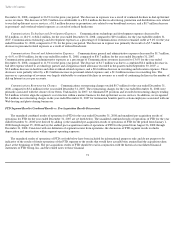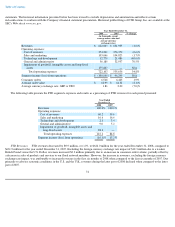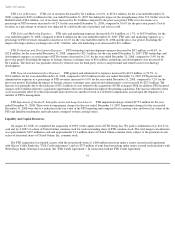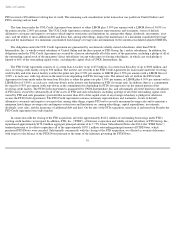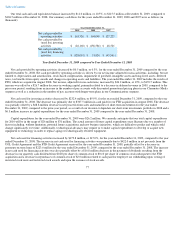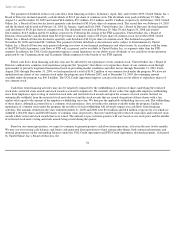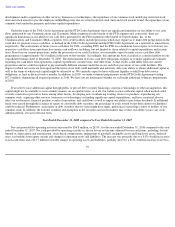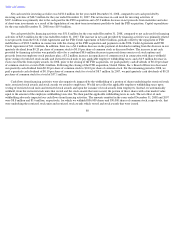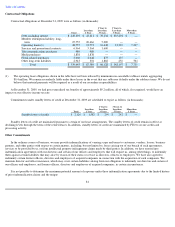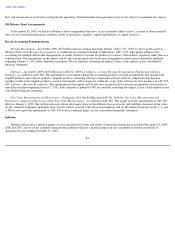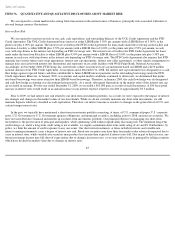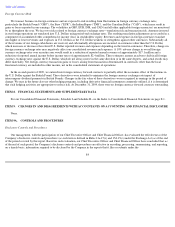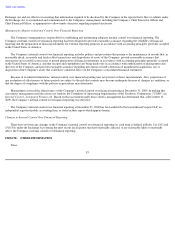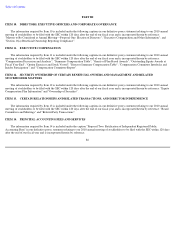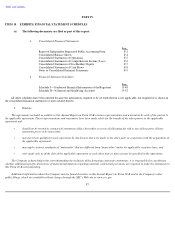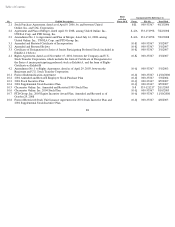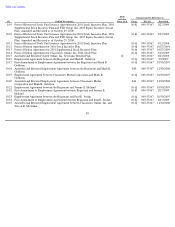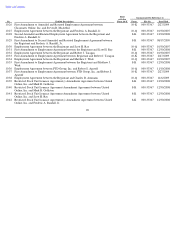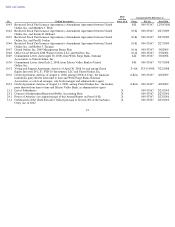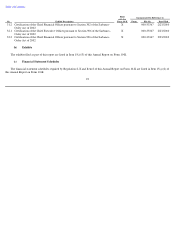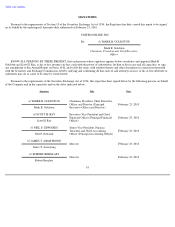Classmates.com 2009 Annual Report Download - page 86
Download and view the complete annual report
Please find page 86 of the 2009 Classmates.com annual report below. You can navigate through the pages in the report by either clicking on the pages listed below, or by using the keyword search tool below to find specific information within the annual report.
Table of Contents
ITEM 7A. QUANTITATIVE AND QUALITATIVE DISCLOSURES ABOUT MARKET RISK
We are exposed to certain market risks arising from transactions in the normal course of business, principally risk associated with interest
rate and foreign currency fluctuations.
Interest Rate Risk
We are exposed to interest rate risk on our cash, cash equivalents, and outstanding balances of the UOL Credit Agreement and the FTD
Credit Agreement. The UOL Credit Agreement bears interest at either LIBOR plus 3.50% per annum (with a LIBOR floor of 3.00%) or the
prime rate plus 2.00% per annum. The interest rate set forth in the FTD Credit Agreement for loans made under the revolving credit facility and
term loan A facility is either LIBOR plus 3.50% per annum (with a LIBOR floor of 3.00%) or the prime rate plus 2.50% per annum, in each
case, with step-downs in the interest rate depending on FTD's leverage ratio. The interest rate set forth in the FTD Credit Agreement for loans
made under the term loan B facility is either LIBOR plus 4.50% per annum (with a LIBOR floor of 3.00%) or the prime rate plus 3.50% per
annum, in each case, with step-downs in the interest rate depending on FTD's leverage ratio. The FTD Credit Agreement also requires that FTD
maintain one or more interest rate swap agreements, interest rate cap agreements, interest rate collar agreements, or other similar arrangements to
manage risks associated with interest rate fluctuations and exposures on its credit facilities with Wells Fargo Bank, National Association.
Accordingly, in November 2008, FTD Group, Inc. entered into a three-year interest rate cap instrument based on LIBOR and a $150 million
notional amount of our FTD Credit Agreement. At inception and at December 31, 2008, the interest rate cap instrument was designated as a cash
flow hedge against expected future cash flows attributable to future LIBOR interest payments on the outstanding borrowings under the FTD
Credit Agreement. However, in January 2009, as economic and capital market conditions continued to deteriorate, we determined that prime
rate-based borrowings were more attractive than LIBOR-based borrowings. Therefore, in January 2009, the cash flow hedge was de-designated
and cash flow hedge accounting was discontinued prospectively. As a result, subsequent fluctuations in the market value of the interest rate cap
are recorded in earnings. For the year ended December 31, 2009, we recorded a $10,000 gain as a result of such fluctuations. A 100 basis point
increase in interest rates would result in an annual increase in our interest expense related to our debt of approximately $3.3 million.
Prior to 2009, we had interest rate risk related to our short-
term investments portfolio. As a result, we were exposed to the impact of interest
rate changes and changes in the market values of our investments. While we do not currently maintain any short-term investments, we still
maintain deposits which are classified as cash equivalents. Therefore, our interest income is sensitive to changes in the general level of U.S. and
certain foreign interest rates.
In the past, we typically have maintained a short-term investments portfolio consisting, at times, of U.S. commercial paper, U.S. corporate
notes, U.S. Government or U.S. Government agencies obligations, and municipal securities, including, prior to 2008, auction rate securities. We
have not used derivative financial instruments in our short-term investments portfolio. Our principal objective in managing our short-term
investments is the preservation of principal and liquidity, while optimizing yield without significantly increasing risk. The minimum long-term
credit rating is A, and if a long-term credit rating is not available, we require a minimum short-term credit rating of A1 and P1. Furthermore, by
policy, we limit the amount of credit exposure to any one issuer. Our short-term investments, at times in both fixed-rate and variable-rate
interest-earning instruments, carry a degree of interest rate risk. Fixed-rate securities may have their fair market value adversely impacted due to
a rise in interest rates, while variable-rate securities may produce less income than expected if interest rates fall. Due in part to these factors, any
future investment income may fall short of expectations due to changes in interest rates, or we may suffer losses in principal by selling securities
which have declined in market value due to changes in interest rates.
83


